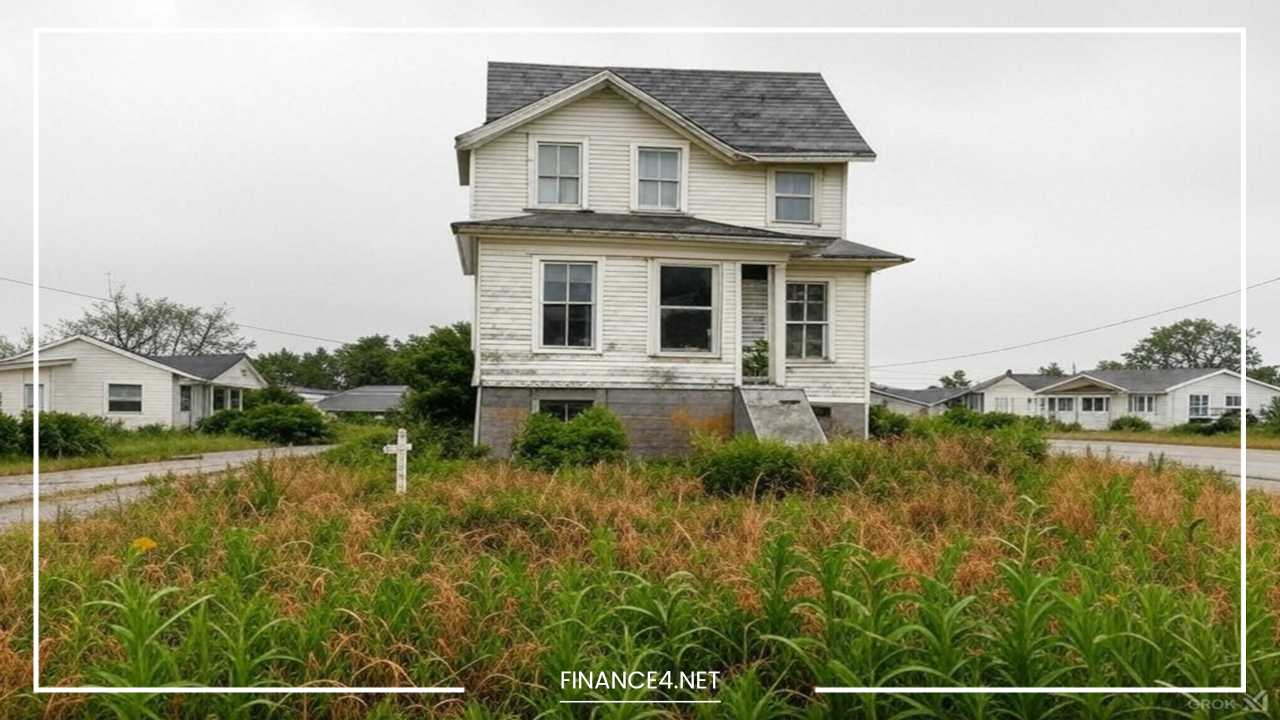What Does Pre-Foreclosure Mean?

Pre-Foreclosure
What Is Pre-Foreclosure and Why It Matters
Pre-foreclosure refers to the period in the foreclosure process when a homeowner has fallen behind on mortgage payments, but the lender has not yet initiated formal foreclosure proceedings.
During this phase, the homeowner still has several options available to avoid losing the property, and there is potential for interested buyers to acquire the property before it goes through the full foreclosure process.
The pre-foreclosure period is a critical time for both homeowners in distress and potential real estate investors who are seeking opportunities in distressed properties.
Understanding what pre-foreclosure means and how the process works can help homeowners make informed decisions about how to handle their mortgage default, as well as allow buyers to recognize opportunities that might arise during this stage of a property’s life cycle.
Understanding the Pre-Foreclosure Process
When a homeowner begins to miss mortgage payments, the lender initiates a process known as pre-foreclosure, signaling that they may eventually pursue foreclosure if the default isn’t corrected.
The lender typically sends a Notice of Default (NOD) to the homeowner. This legal document serves as an official warning that the homeowner is in default and needs to take immediate action to either catch up on the mortgage payments or take other measures to resolve the issue.
In most cases, the homeowner has a window of time in which they can resolve the default before the lender proceeds with formal foreclosure actions.
Steps in the Pre-Foreclosure Process:
- Missed Payments:
- The pre-foreclosure process begins when the homeowner misses one or more mortgage payments. Lenders generally allow a grace period, but after missing three to six months of payments, the lender may start the legal process.
- Notice of Default (NOD):
- If the missed payments are not addressed, the lender will issue a Notice of Default (NOD). This document outlines the amount owed and provides the homeowner with a period to rectify the default. The exact timing and procedures vary depending on local and state laws.
- Communication with the Lender:
- Once the homeowner receives the NOD, they typically have a period of time to reach out to the lender and either catch up on payments or negotiate a solution. Lenders may be open to various options, such as loan modifications or a payment plan.
- Pre-Foreclosure Resolution Options:
- Homeowners in pre-foreclosure still have several potential options to resolve the situation without losing the home, which is explored further below.
- Foreclosure Action:
- If the homeowner cannot resolve the default by negotiating with the lender or finding another solution, the lender will eventually proceed to file a foreclosure lawsuit, and the process will move from pre-foreclosure to foreclosure.
Key Points to Remember About Pre-Foreclosure
The pre-foreclosure period is critical because it represents the last chance for homeowners to explore alternatives to losing their home. If you’re in this situation, here’s what you need to understand:
- Pre-Foreclosure as a Warning Sign:
- The Notice of Default (NOD) serves as an official warning sign that foreclosure is imminent if action isn’t taken. It’s essential for homeowners to take the NOD seriously and respond quickly. The longer they wait, the fewer options they may have.
- Timeframe Variability:
- The length of the pre-foreclosure period depends on the lender’s actions and local laws. In some states, the pre-foreclosure period may last only a few months, while in others, it can last up to a year or longer.
- Remaining Options for Homeowners:
- Even during pre-foreclosure, homeowners have several options for saving their home or minimizing the damage:
- Loan Modification: A loan modification could involve reducing the interest rate, extending the loan term, or even reducing the principal balance.
- Repayment Plans: If the homeowner can’t afford to pay back the missed payments all at once, a repayment plan allows them to make up for the arrears gradually.
- Short Sale: If the homeowner owes more than the property is worth, a short sale may be an option, allowing the property to be sold for less than the mortgage balance.
- Deed in Lieu of Foreclosure: In some cases, homeowners can voluntarily transfer the property’s title back to the lender in exchange for cancellation of the mortgage debt.
- Even during pre-foreclosure, homeowners have several options for saving their home or minimizing the damage:
Can I Buy a House in Pre-Foreclosure?
Yes, buying a house in pre-foreclosure is possible, but the process can be more complicated than a typical home purchase.
Pre-foreclosure homes may offer opportunities to purchase property below market value, but buyers need to carefully evaluate each situation.
Finding Pre-Foreclosure Properties:
- Public Records:
- Many counties have public records databases that list properties in pre-foreclosure. Buyers can access these databases online or visit local government offices to obtain information. These records usually include the homeowner’s name, the mortgage lender, and the amount of arrears.
- Real Estate Professionals:
- Experienced real estate agents who specialize in distressed properties can help identify pre-foreclosure opportunities. They may have access to listings and additional tools to locate properties that are not widely advertised.
- Online Platforms:
- Specialized websites and services track pre-foreclosure listings. Websites like Zillow, RealtyTrac, and Foreclosure.com often have filters that allow buyers to search specifically for pre-foreclosure homes.
- Auction Sites:
- Some homes in pre-foreclosure will eventually be auctioned off at foreclosure sales. Buyers may want to research upcoming foreclosure auctions and decide whether participating in such an auction is a viable option.
Due Diligence in Pre-Foreclosure Purchases:
Buying a pre-foreclosure home requires more due diligence than a traditional property purchase. Several factors can impact the decision-making process:
- Property Condition:
- Homes in pre-foreclosure may not be in the best condition. The homeowner may have neglected maintenance or deferred repairs, leading to potential issues that could require significant investments in renovations. Buyers should factor in these additional costs when making an offer.
- Legal Complications:
- Properties in pre-foreclosure may have liens or other legal issues attached to them. This could include unpaid property taxes or unresolved debts. Buyers should ensure they perform a title search to check for any encumbrances on the property before proceeding.
- Title Issues:
- One of the more complicated aspects of purchasing pre-foreclosure properties is clearing the title. Some pre-foreclosures come with a complex title that needs to be resolved before the sale can go through. Buyers should consult a real estate attorney to ensure the title is clear of any claims.
How Can I Buy a House in Pre-Foreclosure?
There are a few different ways to purchase a pre-foreclosure property, depending on the homeowner’s situation and the buyer’s approach:
- Direct Negotiation with the Homeowner:
- The first step in purchasing a pre-foreclosure home is to try to negotiate directly with the homeowner. If the homeowner is willing to sell, you may be able to reach an agreement before the property is formally foreclosed upon. This often requires flexibility and understanding, as homeowners may be under significant financial stress.
- Short Sale:
- If the homeowner owes more than the property is worth and the lender agrees to sell the home for less than the outstanding mortgage balance, this is called a short sale. Buyers can submit an offer to purchase the home directly from the lender. Keep in mind that short sales can take longer to close than regular transactions, as the lender must approve the sale terms.
- Foreclosure Auctions:
- If a property reaches the point where it is scheduled for a foreclosure auction, buyers can attend the auction and bid on the property. However, it’s important to note that these auctions typically require full payment in cash, and the property is sold “as-is,” with no guarantees or warranties.
Selling a Home in Pre-Foreclosure
If you’re a homeowner facing pre-foreclosure, it’s important to know that you have several options available to avoid foreclosure and minimize its impact on your life. Here’s what you can do:
- Consult a Housing Counselor:
- Seek assistance from a HUD-approved housing counselor. These nonprofit counselors can help you evaluate your options and guide you through the process of dealing with your mortgage default.
- Talk to Your Lender:
- It’s crucial to open a line of communication with your lender as soon as you fall behind on payments. Lenders may be willing to negotiate a loan modification, set up a repayment plan, or offer forbearance, which can provide temporary relief.
- Consider a Short Sale:
- If you owe more on your home than it’s worth, a short sale might be a good option. A short sale allows you to sell the property for less than the mortgage balance, which may be less damaging to your credit than a foreclosure.
- Explore Deed in Lieu of Foreclosure:
- If selling your home isn’t an option, a deed in lieu of foreclosure might be a good choice. In this scenario, you voluntarily transfer the property to the lender in exchange for a release from the mortgage debt.
Pre-Foreclosure vs. Foreclosure
Understanding the distinction between pre-foreclosure and foreclosure is key for both homeowners and buyers:
- Pre-Foreclosure: This is the period before the lender officially begins the foreclosure process. Homeowners still have time to explore solutions such as loan modifications, repayment plans, or short sales. It’s the “last chance” for homeowners to avoid losing the property.
- Foreclosure: Foreclosure is the legal process where the lender takes possession of the home and sells it to recover the unpaid mortgage balance. Foreclosure significantly impacts the homeowner’s credit score and may lead to eviction.
Final Thoughts
Pre-foreclosure is a critical stage in the process of property repossession that offers both challenges and opportunities.
For homeowners, it’s the final window to address financial issues and avoid foreclosure through negotiations with the lender, loan modifications, or other alternatives like short sales or deeds in lieu of foreclosure.
For prospective buyers, pre-foreclosure offers the chance to purchase properties at a discount, but it requires thorough due diligence to avoid complications like repair needs, legal issues, and title problems.
For both parties, navigating the pre-foreclosure process requires knowledge, patience, and often professional advice.
Understanding the intricacies of this stage can help homeowners preserve their homes and buyers secure advantageous real estate deals while minimizing risks.
Disclaimer: This article is for informational purposes only and does not constitute legal, financial, or real estate advice. Always consult a qualified professional for personalized guidance regarding pre-foreclosure, real estate transactions, or legal matters.



